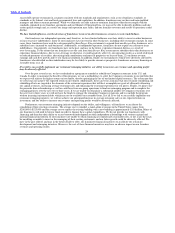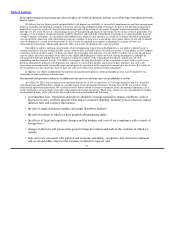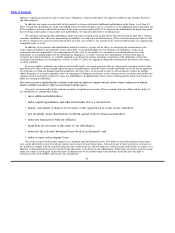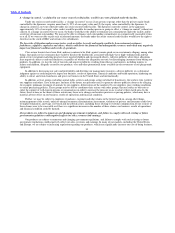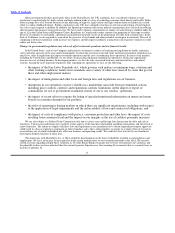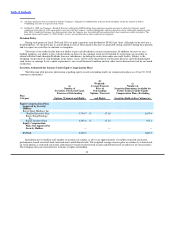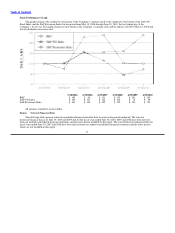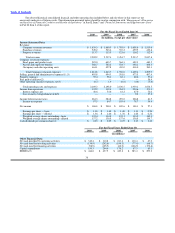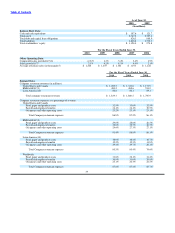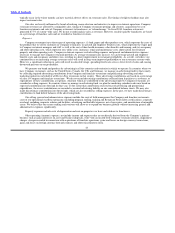Burger King 2010 Annual Report Download - page 36
Download and view the complete annual report
Please find page 36 of the 2010 Burger King annual report below. You can navigate through the pages in the report by either clicking on the pages listed below, or by using the keyword search tool below to find specific information within the annual report.
Table of Contents
Item 2. Properties
Our global restaurant support center and U.S. headquarters is located in Miami, Florida and consists of approximately
213,000 square feet which we lease. We extended the Miami lease for our global restaurant support center in May 2008 through
September 2018 with an option to renew for one five−year period. We lease properties for our EMEA headquarters in Zug, Switzerland
and our APAC headquarters in Singapore. We believe that our existing headquarters and other leased and owned facilities are adequate
to meet our current requirements.
The following table presents information regarding our restaurant properties as of June 30, 2010:
Leased
Building/
Land & Total
Owned(1) Land Building Leases Total
United States and Canada:
Company restaurants 322 210 455 665 987
Franchisee−operated properties 457 318 206 524 981
Non−operating restaurant locations 30 13 15 28 58
Offices and other(2) — — 6 6 6
Total 809 541 682 1,223 2,032
International:
Company restaurants 18 15 367 382 400
Franchisee−operated properties 3 4 88 92 95
Non−operating restaurant locations 1 — 10 10 11
Offices and other(2) 1 — 11 11 12
Total 23 19 476 495 518
(1) Owned refers to properties where we own the land and the building.
(2) Other properties include a consumer research center and storage facilities.
Item 3. Legal Proceedings
Ramalco Corp. et al. v. Burger King Corporation, No. 09−43704CA05 (Circuit Court of the Eleventh Judicial Circuit, Dade
County, Florida). On July 30, 2008, we were sued by four Florida franchisees over our decision to mandate extended operating hours in
the United States. The plaintiffs seek damages, declaratory relief and injunctive relief. The court dismissed plaintiffs’ original complaint
in November 2008. In December 2008, the plaintiffs filed an amended complaint. In August 2010, the court entered an order
reaffirming the legal bases for dismissal of the original complaint, again holding that BKC had the authority under its franchise
agreements to mandate extended operating hours. However, BKC’s motion to dismiss the plaintiff’s amended complaint is still before
the court.
Castenada v. Burger King Corp. and Burger King Holdings, Inc., No. CV08−4262 (U.S. District Court for the Northern District of
California). On September 10, 2008, a class action lawsuit was filed against the Company in the United States District Court for the
Northern District of California. The complaint alleged that all 96 Burger King restaurants in California leased by the Company and
operated by franchisees violate accessibility requirements under federal and state law. In September 2009, the court issued a decision on
the plaintiffs’ motion for class certification. In its decision, the court limited the class action to the 10 restaurants visited by the named
plaintiffs, with a separate class of plaintiffs for each of the 10 restaurants and 10 separate trials. In March 2010, the Company agreed to
settle the lawsuit with respect to the 10 restaurants and, in July 2010, the court gave final approval to the settlement. In April 2010, the
Company received a demand from the law firm representing the plaintiffs in the class action lawsuit, notifying the Company that the
firm was prepared to bring a class action covering the other restaurants. If a lawsuit is filed, the Company intends to vigorously defend
against all claims in the lawsuit, but the Company is unable to predict the ultimate outcome of this litigation.
34


